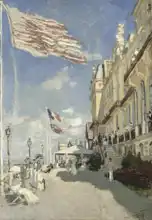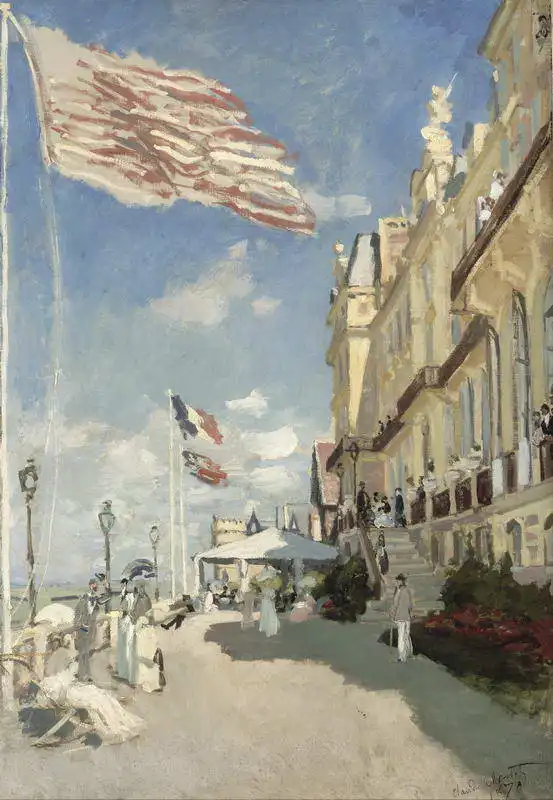About this finishing
Print. The image is printed on the top quality 10-ink HP Z9PS printer on HP matte 270 g / m2 paper. You can choose any size to an accuracy of 1 cm. A margin of 5 cm around the image is added to the size of the motif.


You can find a detailed description about our finishings
here.
Hotel Trouville
During the summer of 1870, on the eve of the Franco-Prussian War,
Claude Monet stayed in Trouville with his young wife Camille shortly after their wedding on 28 June. The Hotel des Roches Noires in Trouville reflects the seaside elegance of the upper bourgeoisie of the Second Empire, much like many of the paintings of
Eugène Boudin , whose influence on the young Monet was significant. Nevertheless, Monet's work reveals its own originality and is an excellent example of his bold painting technique. A light and suggestive brush stroke creates the impression of the movement of flags and enlivens the sky with vague outlines of clouds. The vertical format further emphasizes the contrast between the static figures at the bottom of the canvas and the moving elements subject to the wind at the top. The flag in the foreground attracts special attention thanks to the red and white stripes, painted with a loose brush. This work often evokes Proust, even though the society depicted by Monet is at least a generation older than that represented by the novelist, even though the Hôtel des Roches Noires was one of the models for the great Hôtel de Balbec.
Prevailing color of this fine art print is blue and its shape is portrait. This image is printed on demand - you can choose material, size and finishing.
Claude Oscar Monet (1840-1926). A native Parisian, who thoroughly developed the idea of
Impressionism. Monet almost scientifically studied the effect of light on different objects. He devoted himself to so called transitory states, which quickly led him to work with colour and light, his paintings acting on the viewer from the first impression. His use of open-air painting and objects which were special only because of light opened the way for the beginnings of modern painting. Monet’s
Impression, Sunrise (1874) not only gave the name to the whole art movement, but secured Monet a place among the best painters of all times. At one time, he resided in London and created his famous study
Houses of Parliament (Monet wondered, How could the English painters paint Parliament when it cannot be seen for the fog?). In the
Giverny, which became his favourite retreat after the death of his wife, he painted motifs from his garden and the popular series
Water Lilies - the world of the water was as poetic and mysterious as a primordial paradise.


